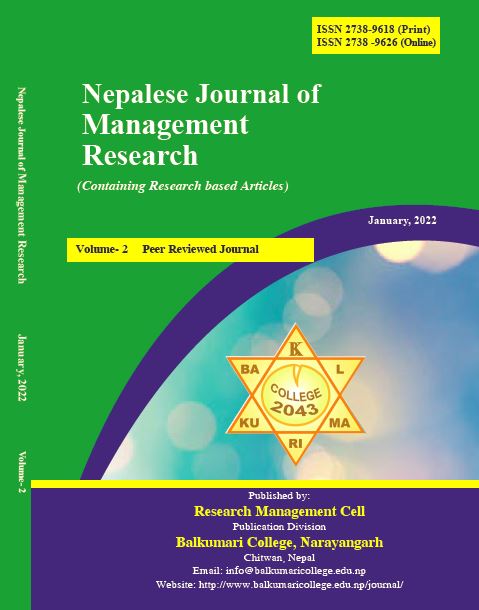Capital Budgeting Technique Used in Nepalese Manufacturing Small and Medium Sized Enterprises
DOI:
https://doi.org/10.3126/njmgtres.v2i1.48258Keywords:
Capital budgeting, capital budgeting technique, small and medium sized enterprisesAbstract
This paper examines the extent of usage of capital budgeting techniques in small and medium sized enterprises (SMEs) and factors influencing on the choice of capital budgeting techniques adopted by SMEs. A self-administered structured questionnaire survey was conducted with 48 small and medium sized manufacturing enterprises operated in Banke district and information has been gathered through questionnaires and personal interviews. The respondents were chief financial officer and concerned authorities of the firm responsible for long term investment decision. Results of the study reveal that payback period is the dominant capital budgeting technique used in SMEs. The results found that net present value was also the most prevalent capital budgeting method. Net present value as the capital budgeting technique is higher in SMEs who operate in the industry for more than 10 years. Easy to explain to top management, obsolescence due to technological developments and simplicity leading to less time and cost involved revealed the main reasons for using the payback period method. Some of the firms are using discounted cash flow methods of capital budgeting and preferring net present value over internal rate of return.
Downloads
Downloads
Published
How to Cite
Issue
Section
License
The journal allows the author to hold the copyright and retain publishing rights without restrictions.

